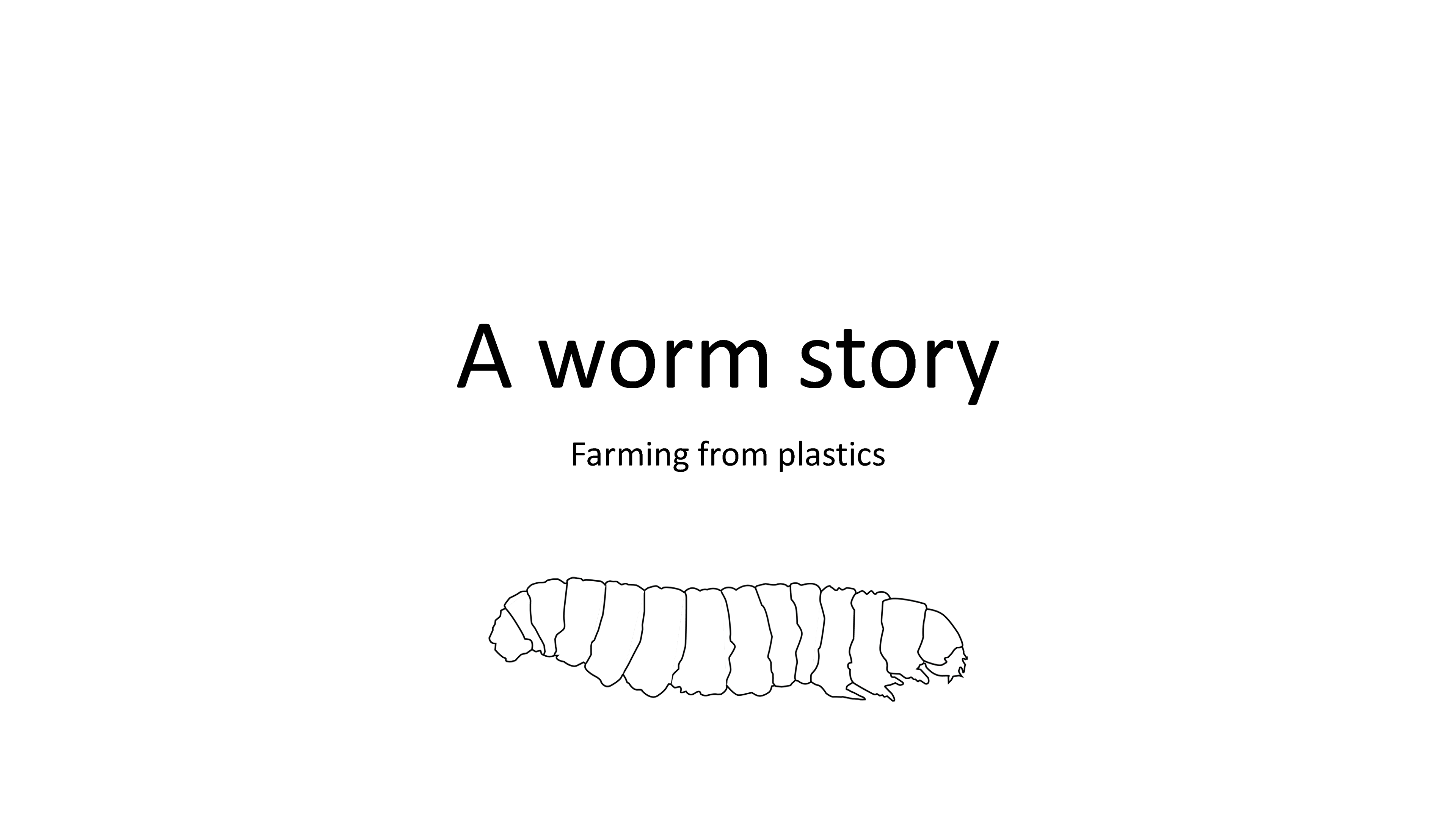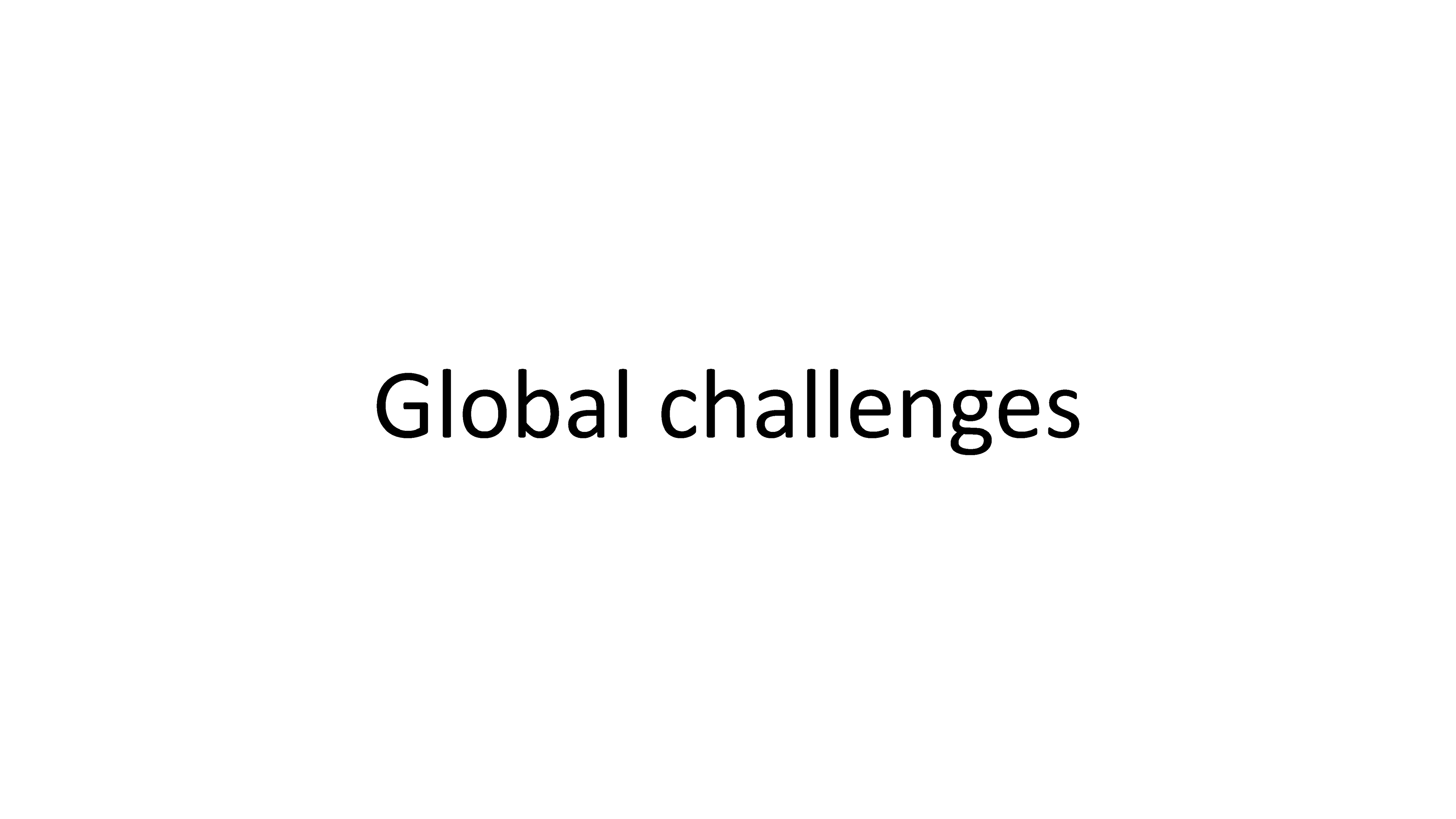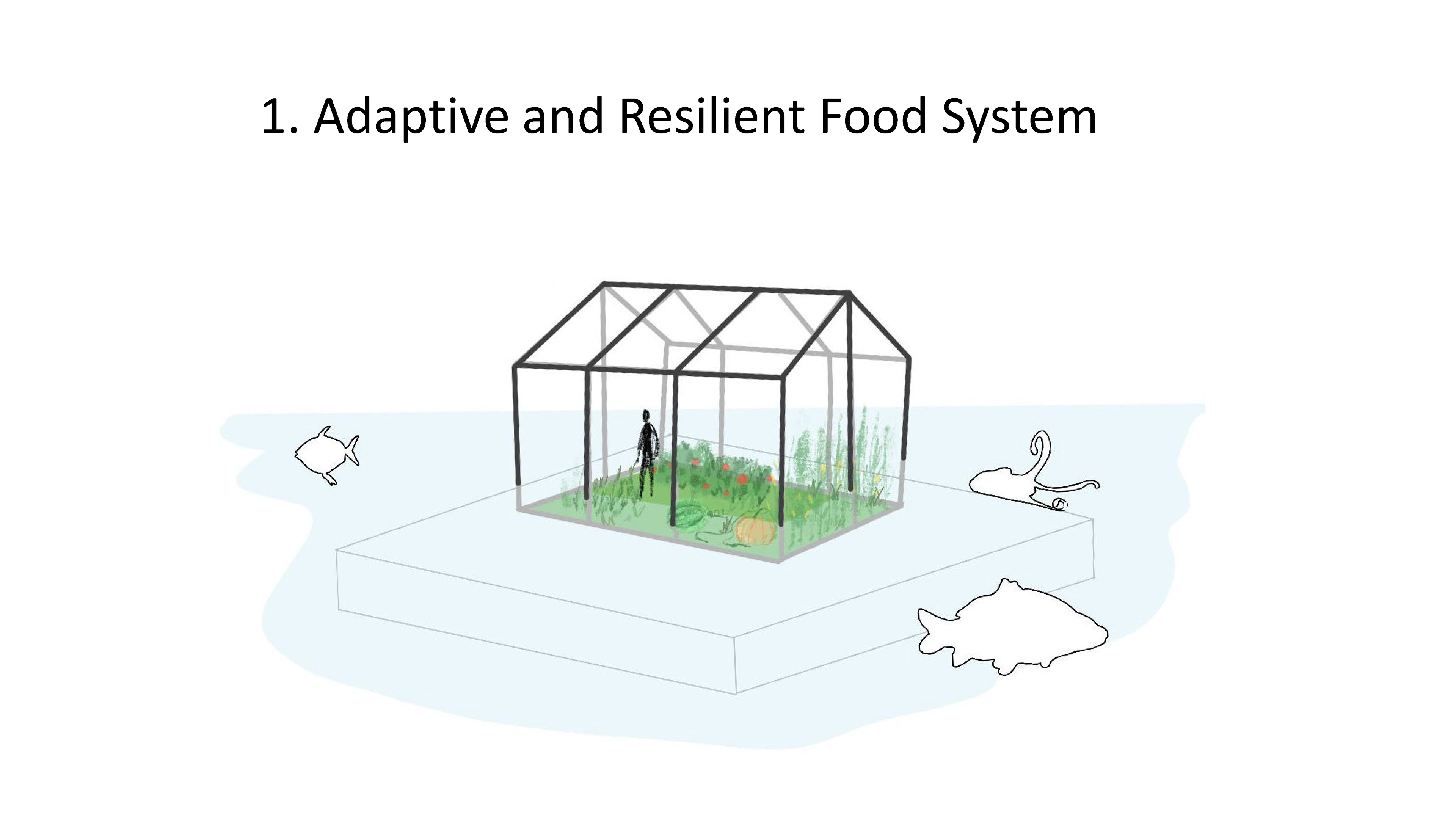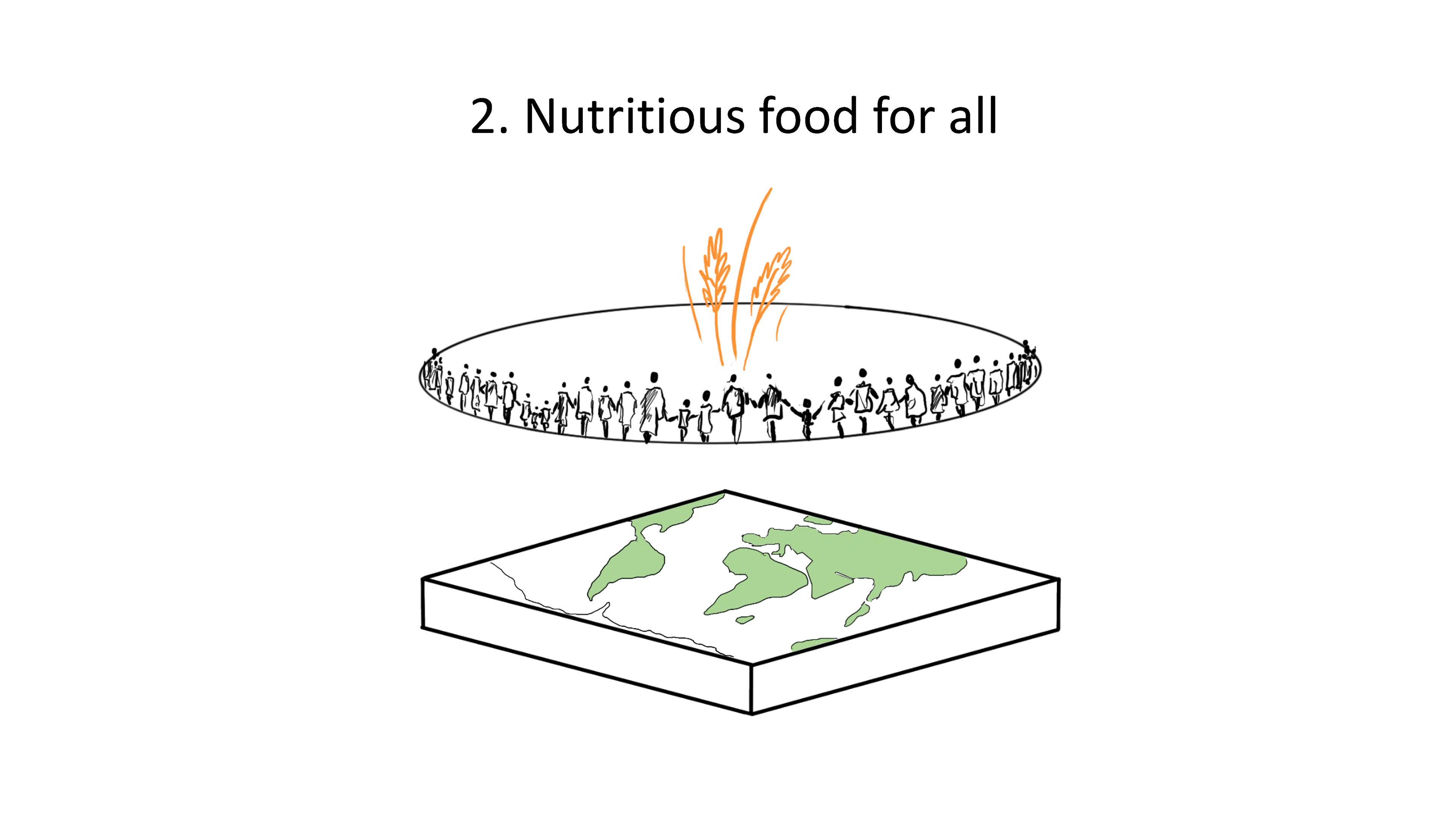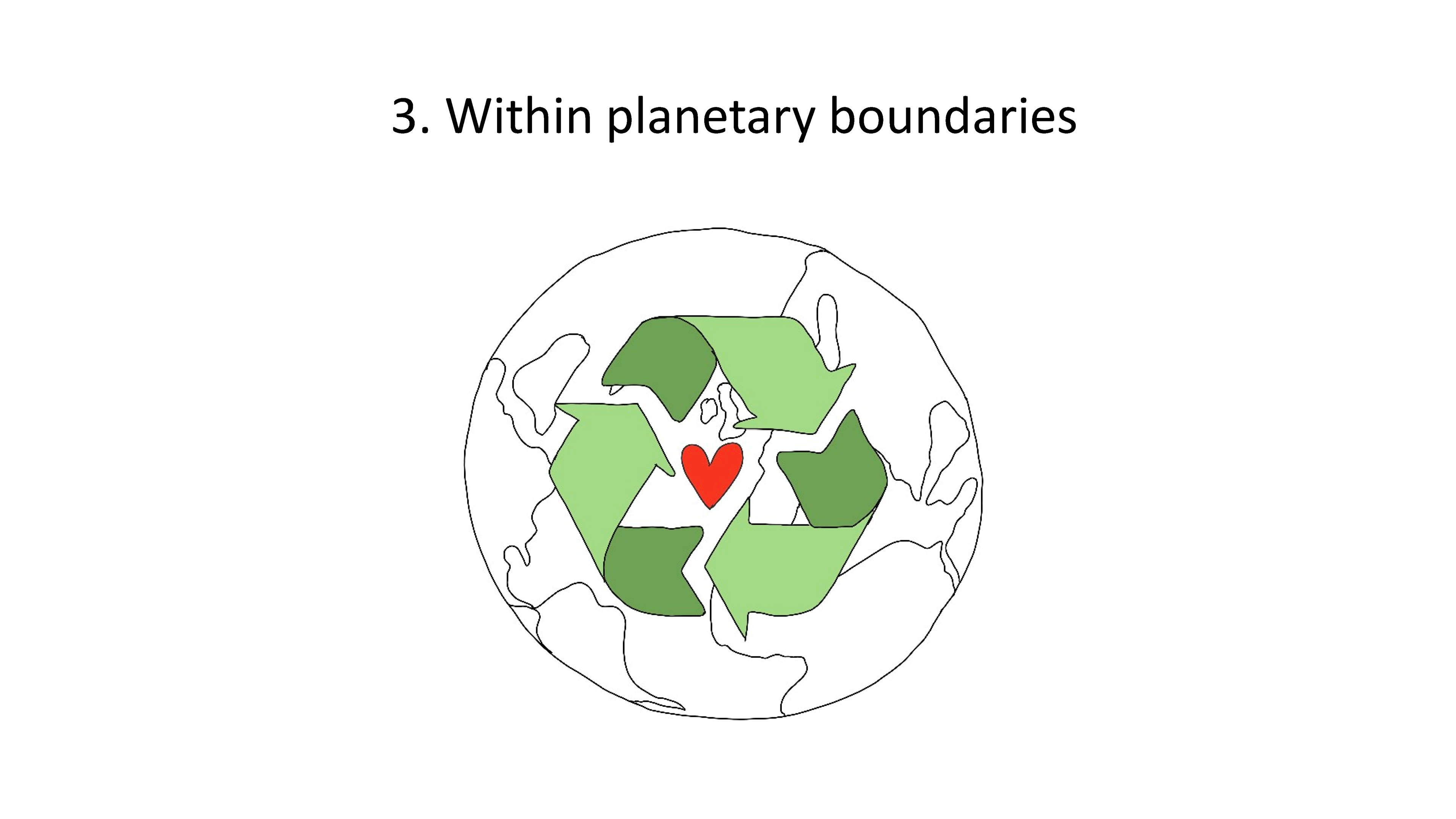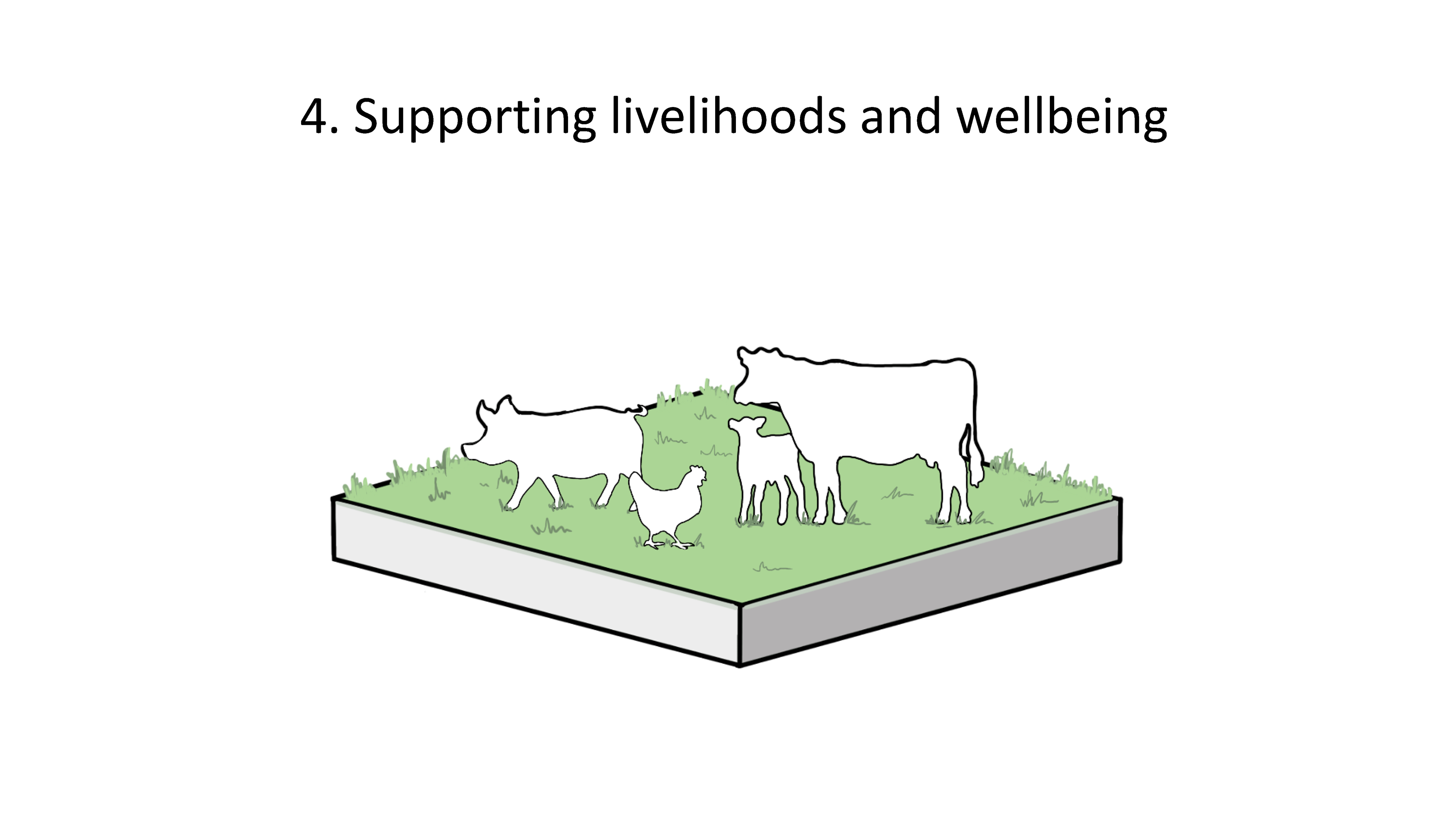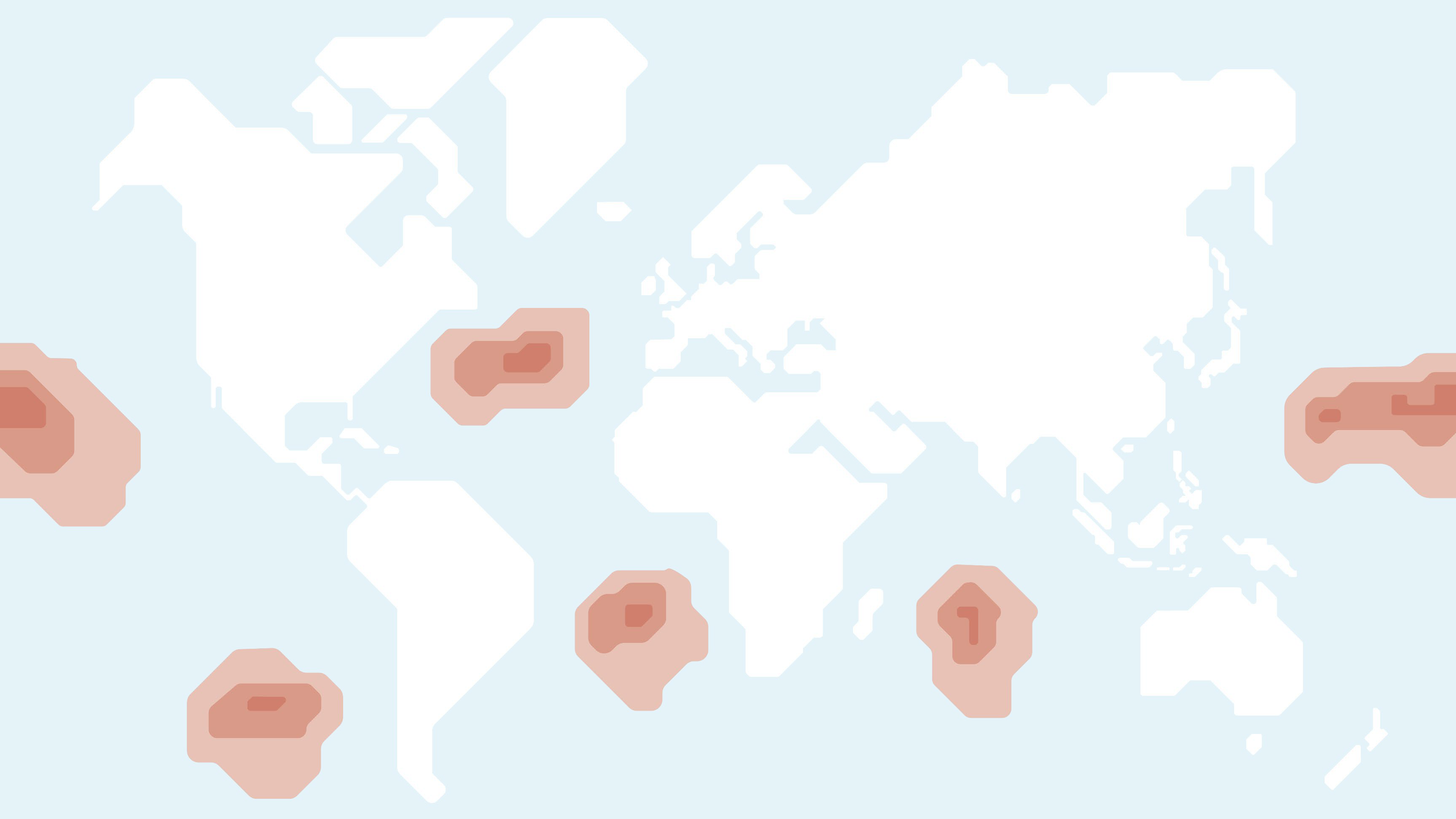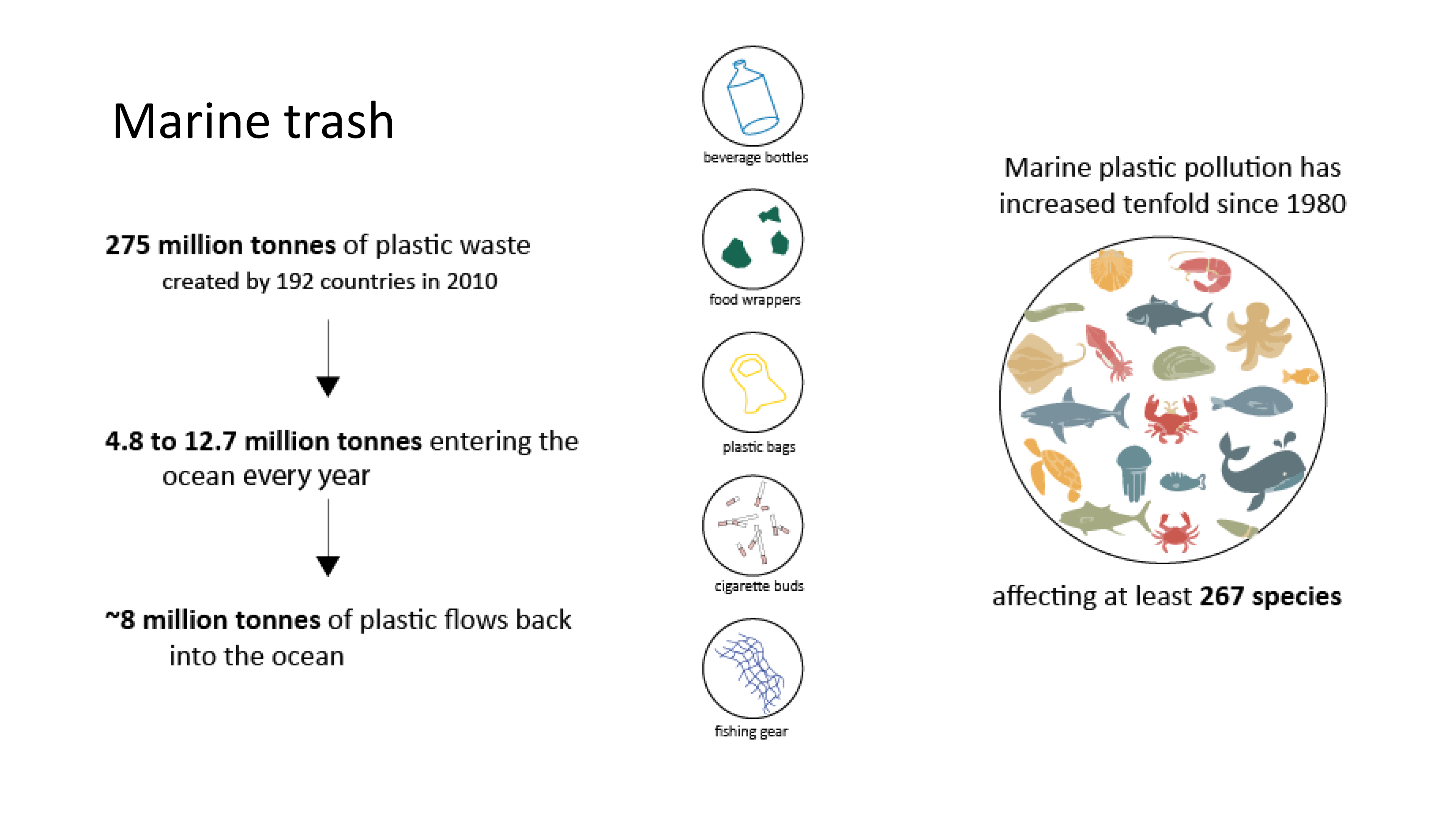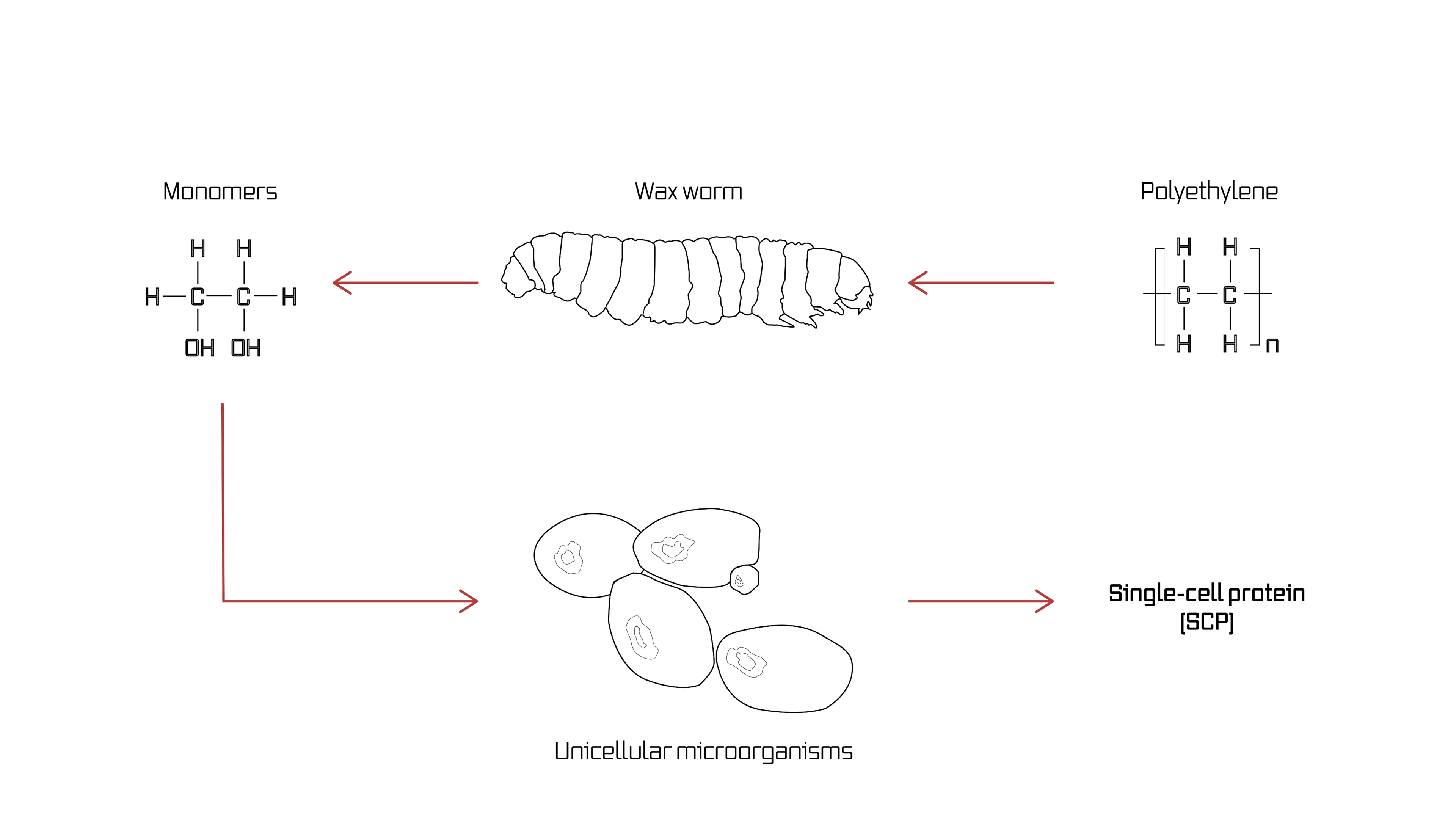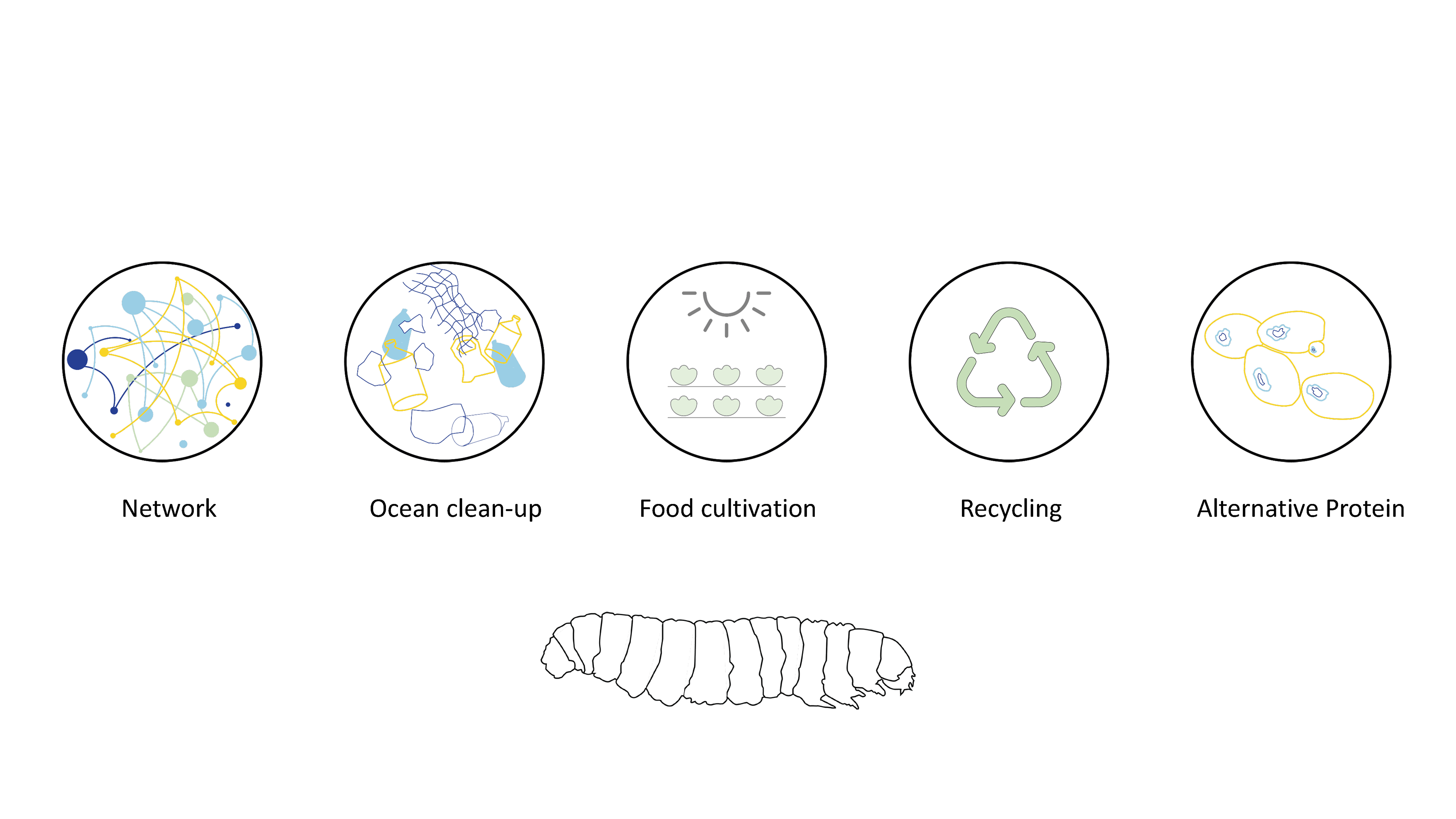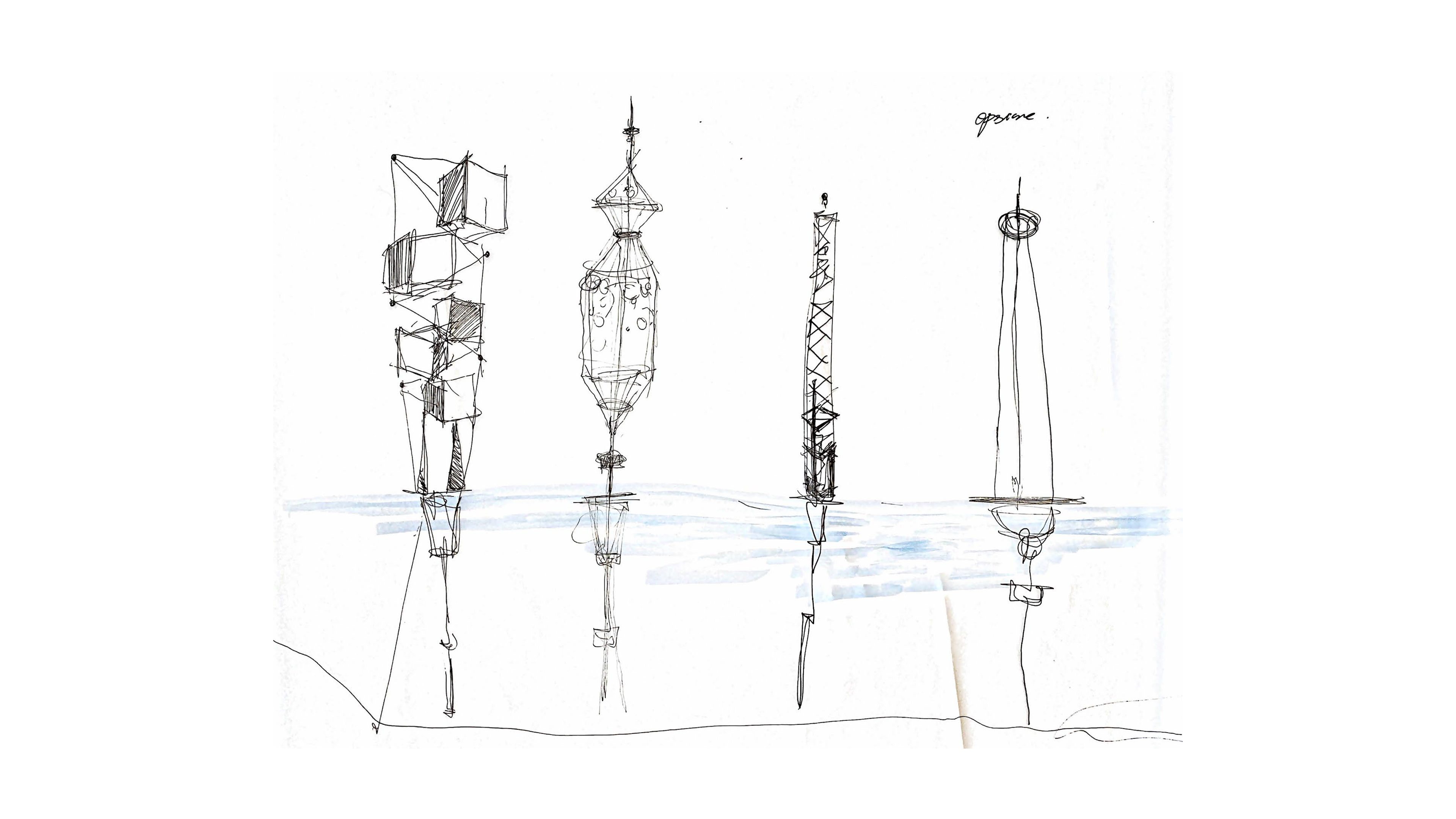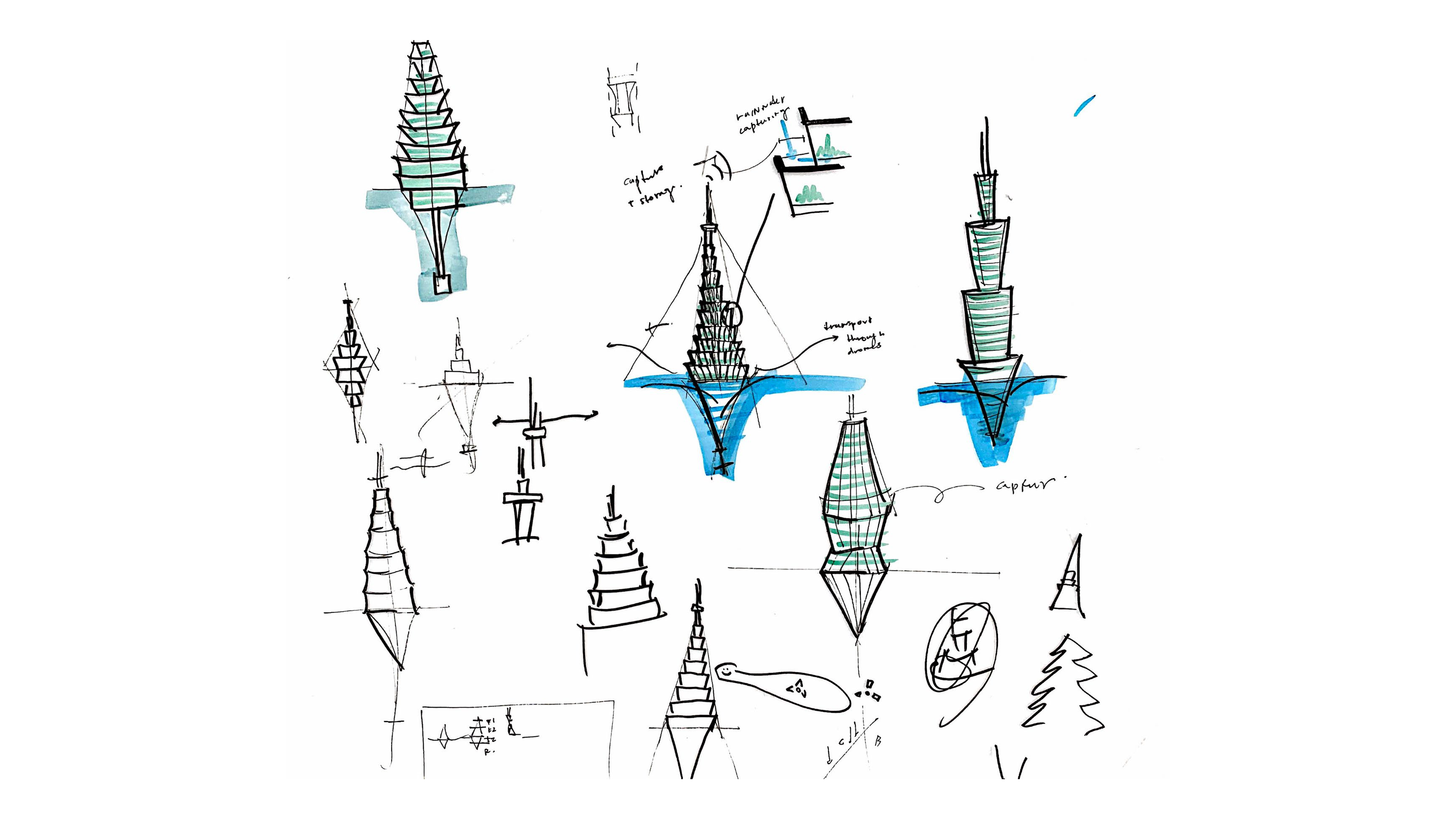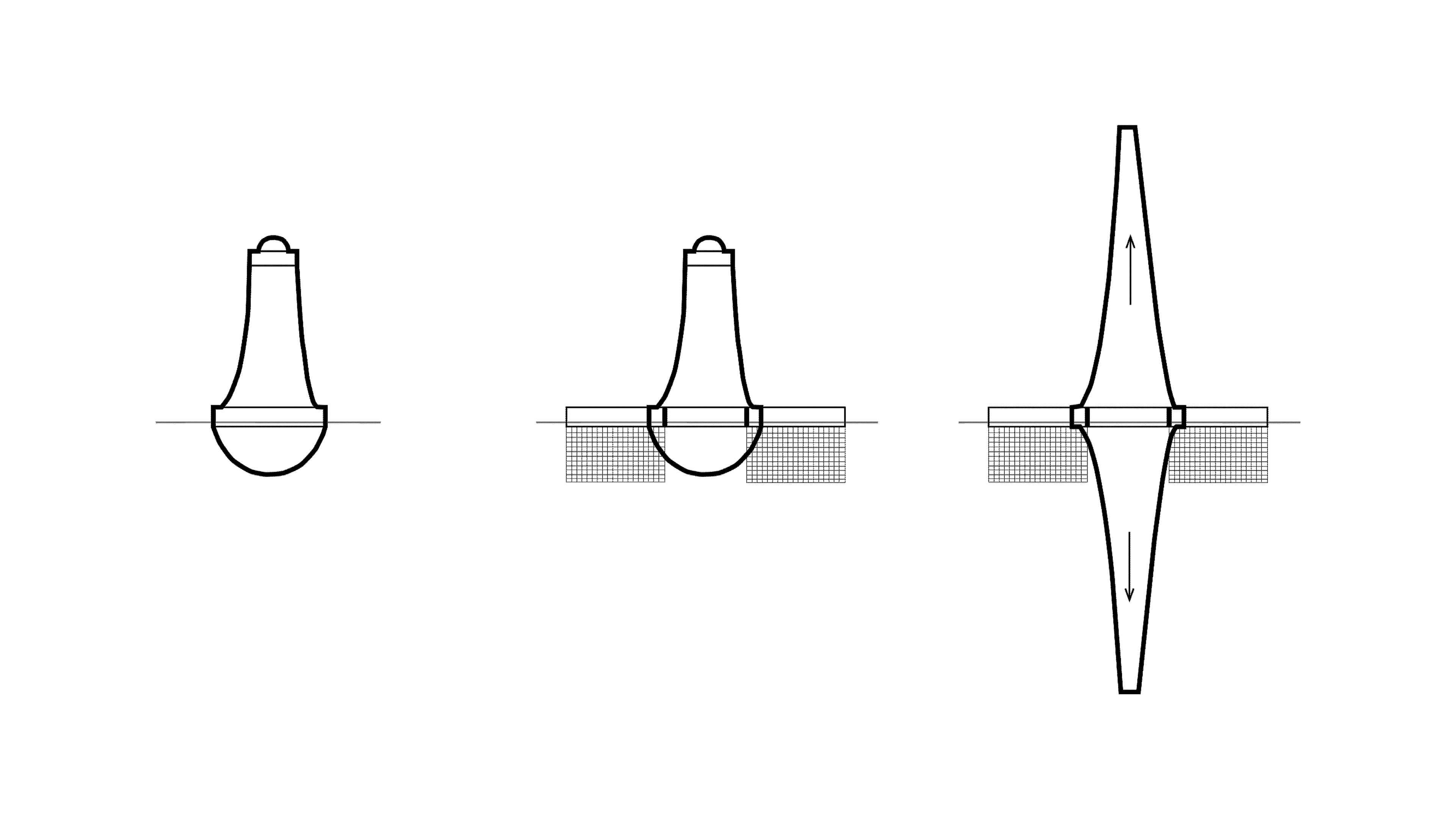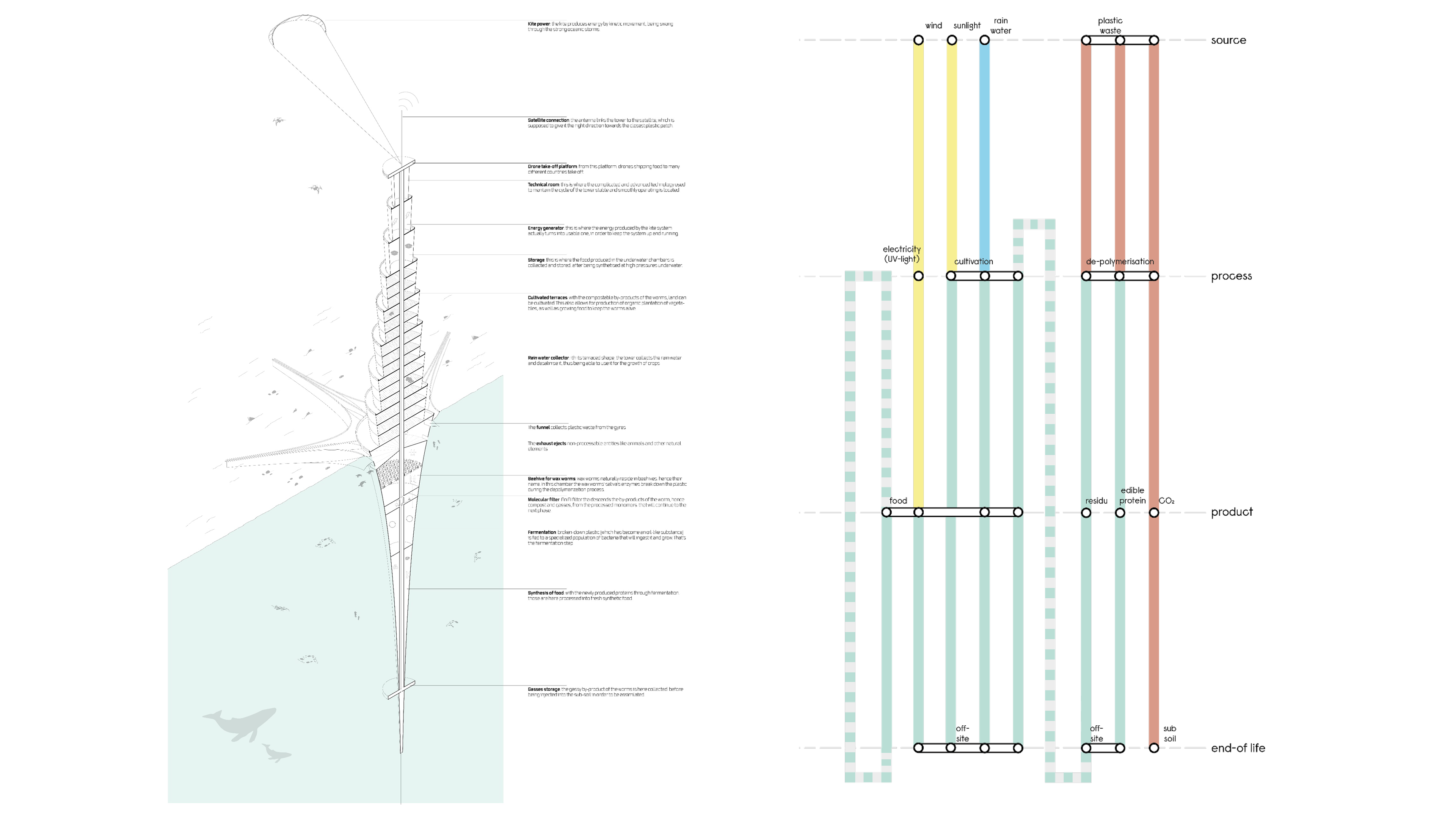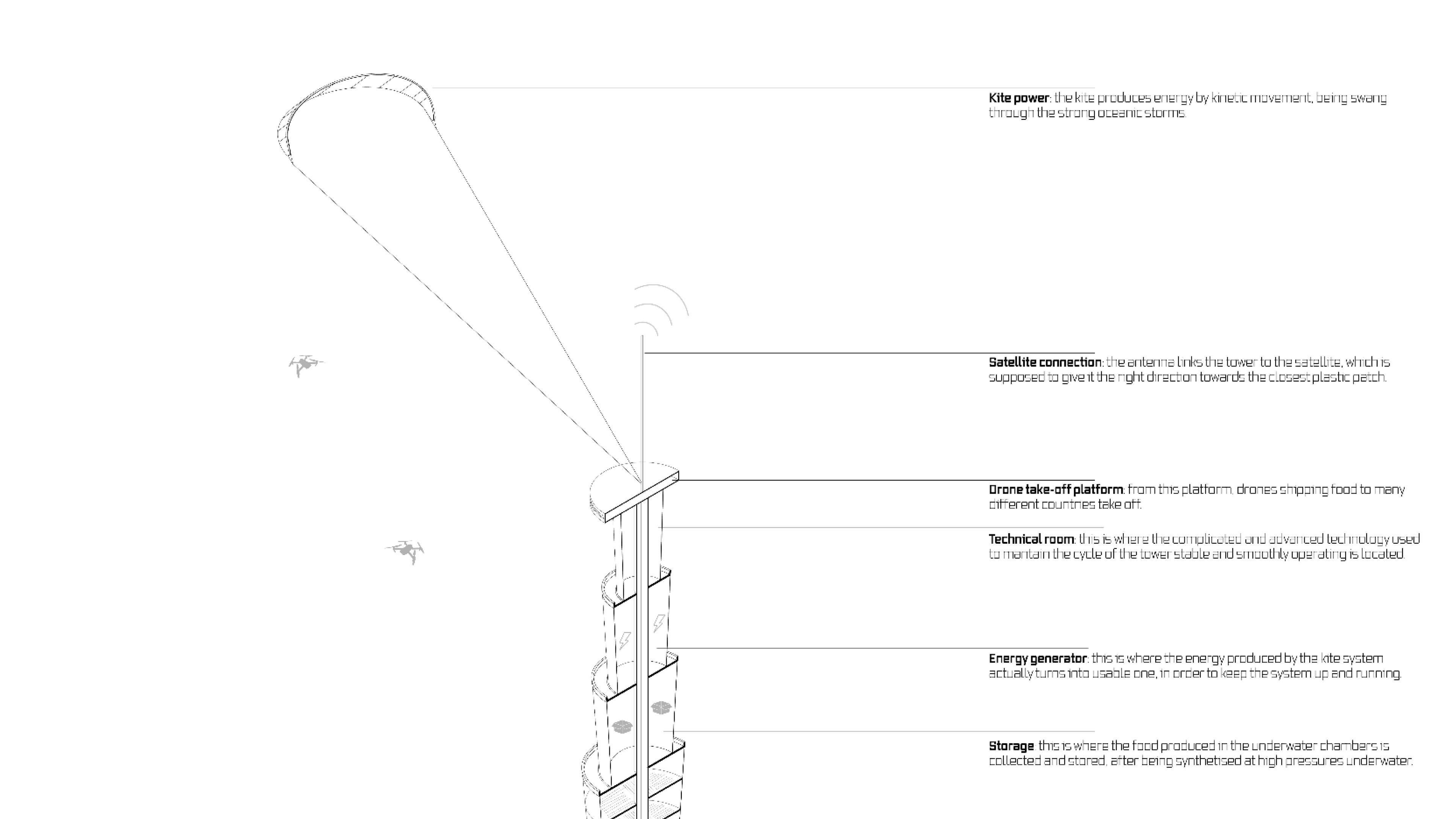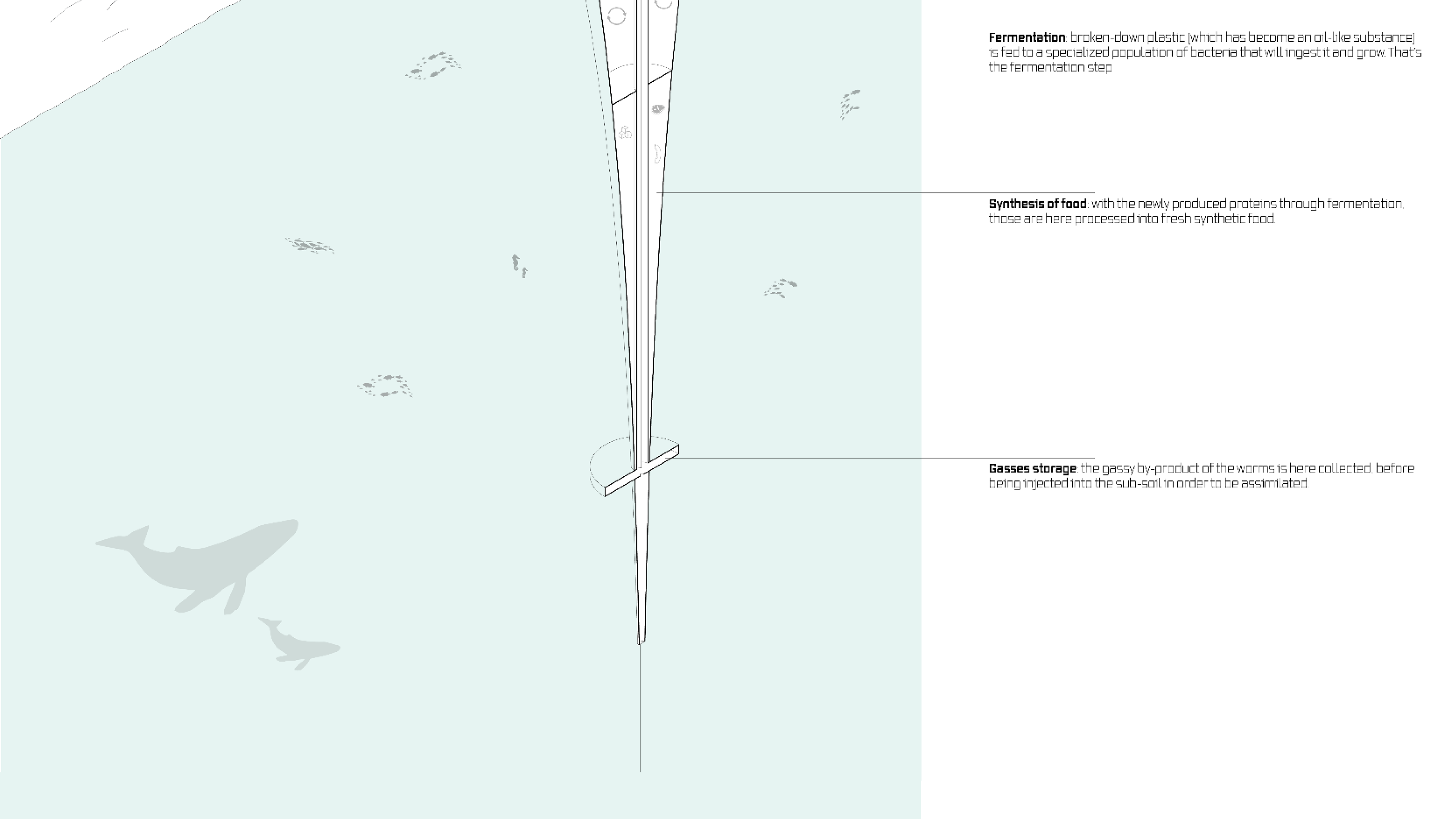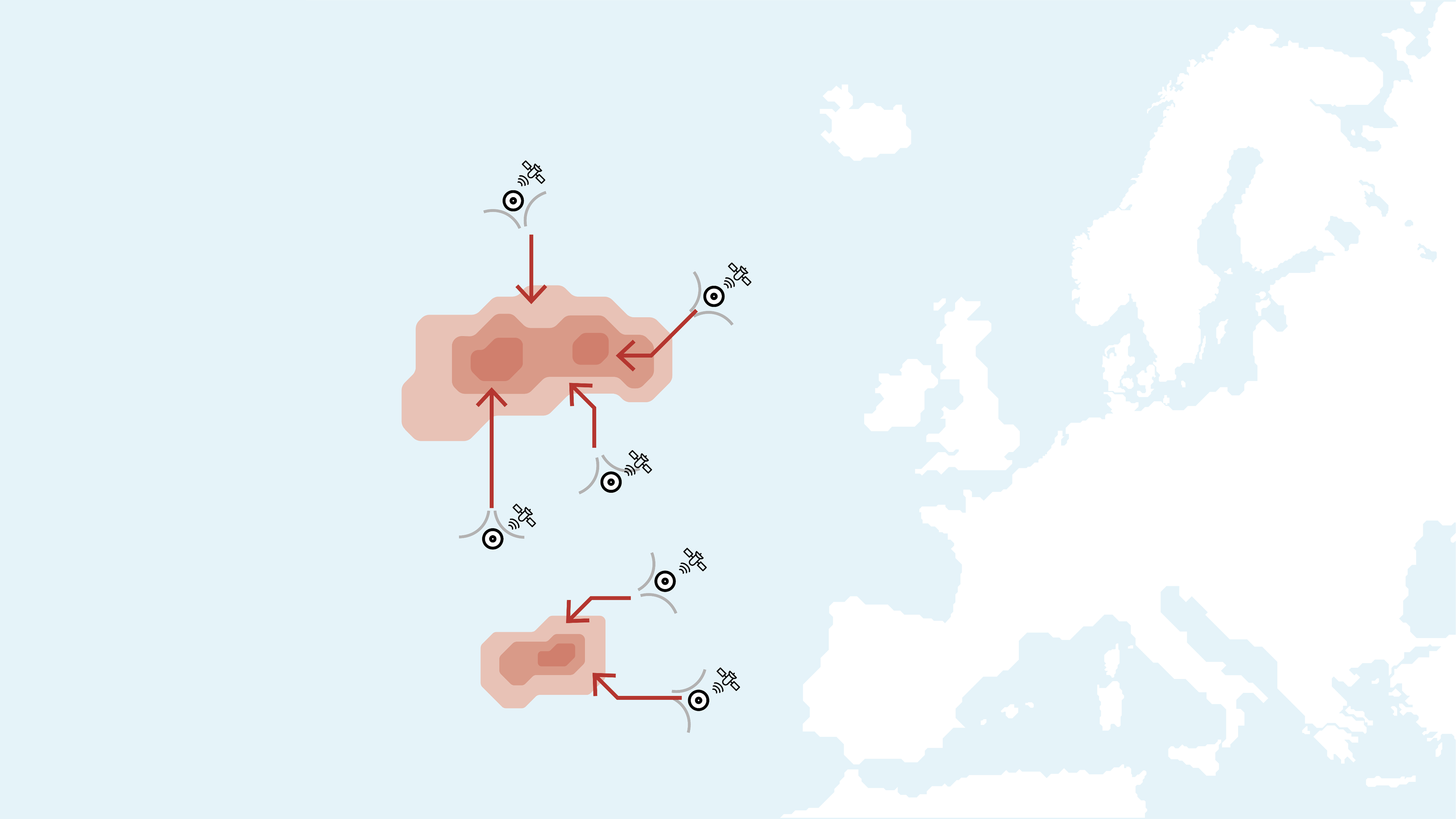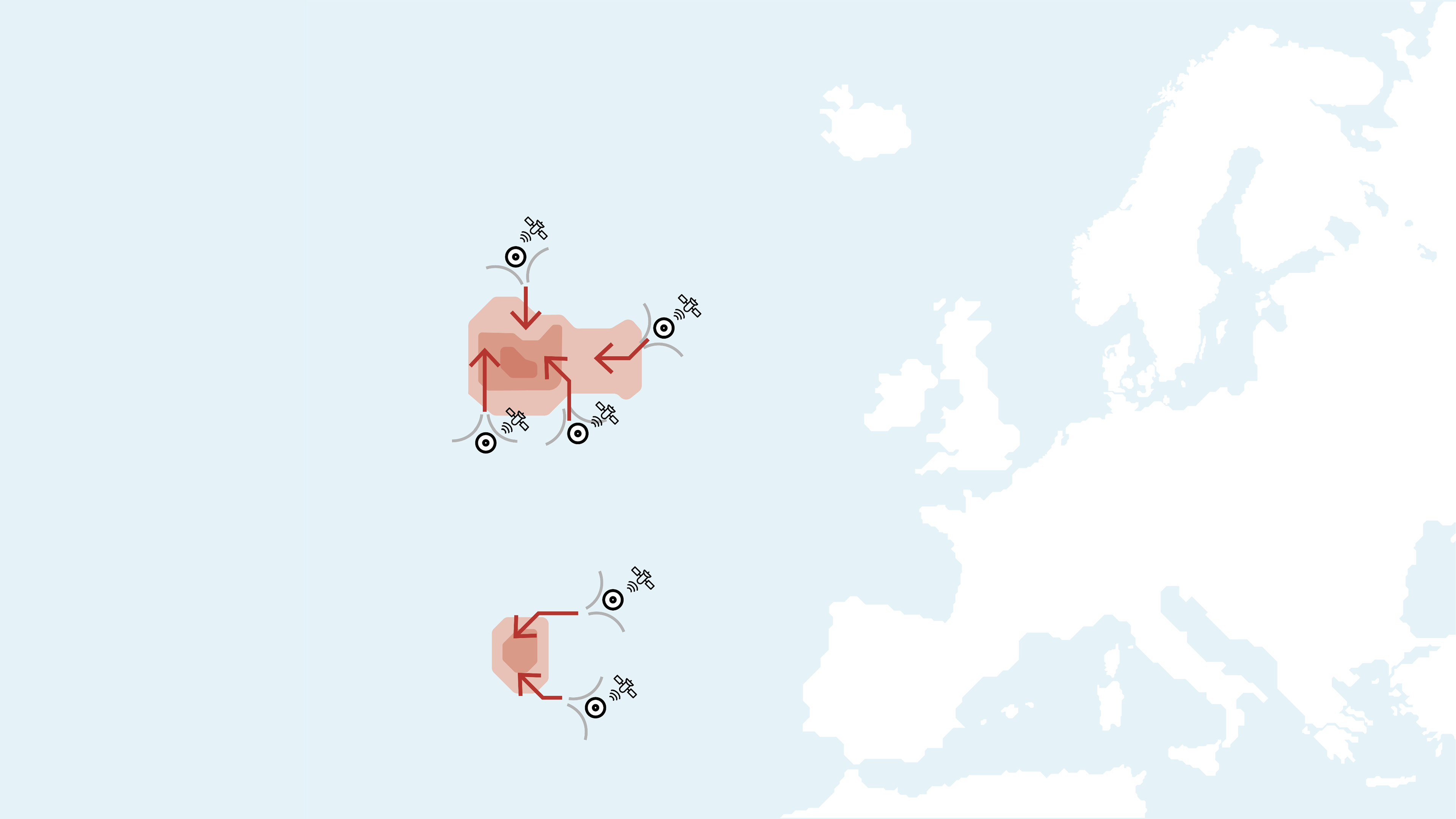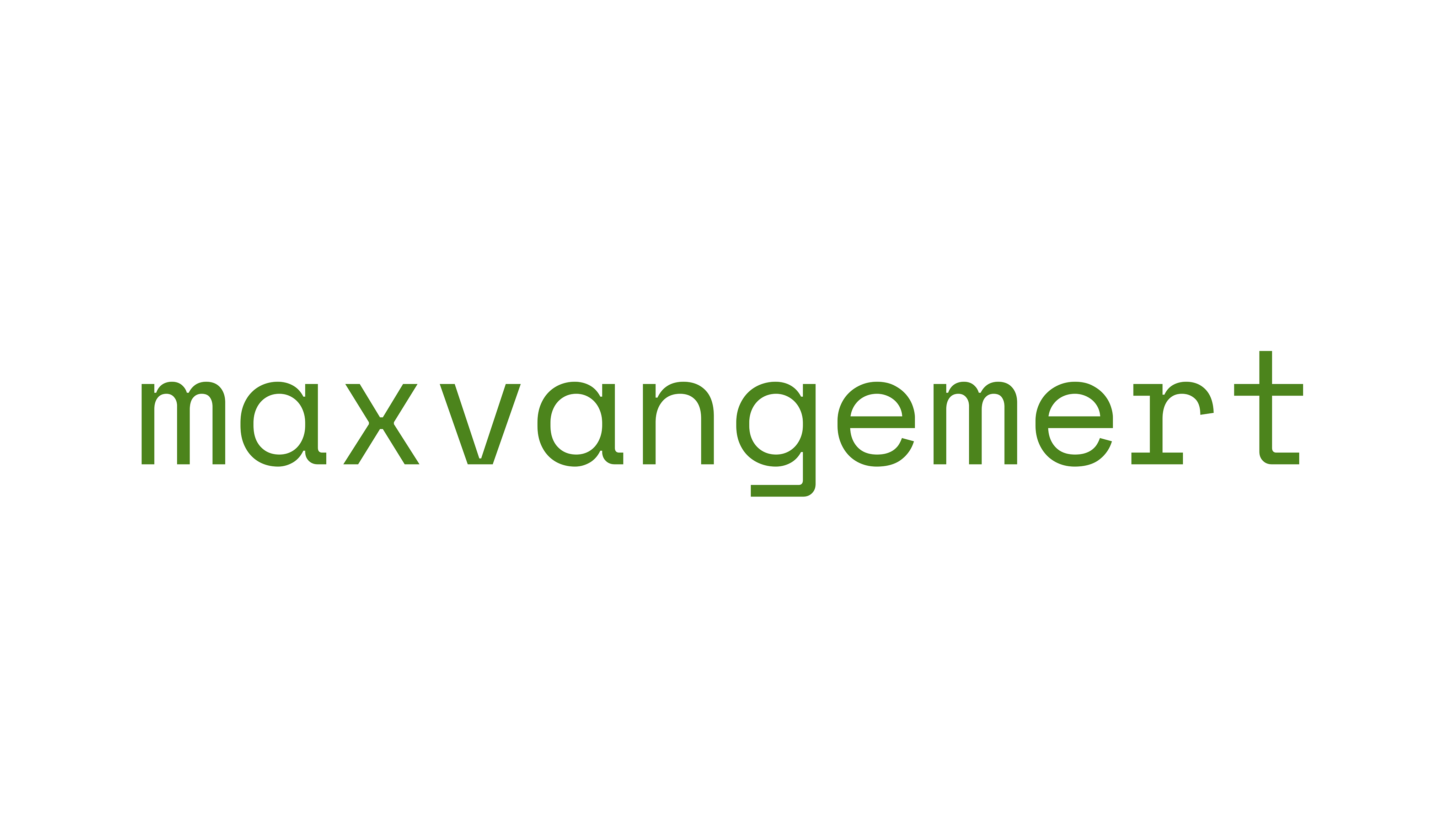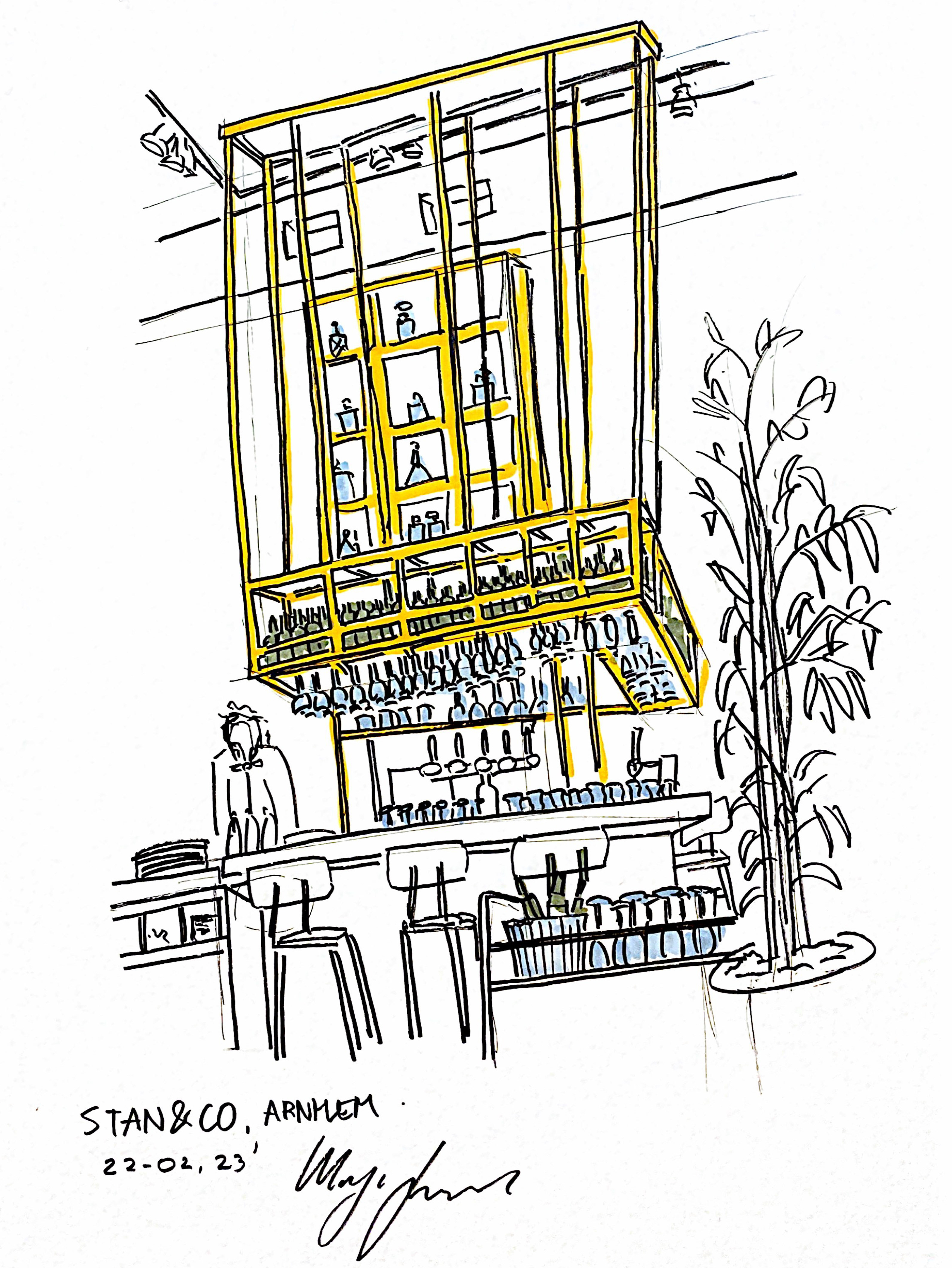Every year the study association of AnArchi organises a 24-hour disruptive design challenge focussing on a range of future-related topics. The 2022/2023 edition focussed on the "food of the future". The challenge contained various workshops, guest speakers' presentations, and the concept's design. After 24 very intense hours, we heard the great news that we were awarded with the first place of the challenge with our unique approach.
The approach that our group took focussed on killing two birds with one stone; the production of food in various forms and solving maritime plastic pollution. The worm story incorporates a process where worms break down polymers into monomers, which by the same worms are transformed into Single Cell Proteins [SCP]'s. These proteins can then be used as an alternative to animal-based proteins. With currently developing technologies such as genetic modification, we can believe that the production of these proteins could be even more intensified. Furthermore, the waste product that comes with the production of these proteins is subsoil that can be used for agricultural applications, for which we chose to add these to the intervention itself.
The design integrates these processes by creating buoy-like entities that float on the Atlantic and Pacific Oceans. By designing the structures like a buoy, the design floats with the same currents as the plastic would. This way the towers will naturally float to the problem areas, capturing the plastic while it moves. By connecting these towers to intercommunicate, multiple towers can act like a swarm, working together to eliminate plastic and optimize food production. This food can then be transported to the mainland shore for consumption.
Overall the design sees a technocratic approach to two real-life problems; the solutions of our oceans and the search for a nutritious and low-carbon diet. We imagine that in the future Our waste can become our food and that plastic pollution can be brought to a stop. There is a long way to go before this can all happen, but we should not forget that this story all started with a worm!
with special thanks to my collaborators; Luca Cecca, Sibora Cenalia, Carla Zurlino, and Juan Garcia Mezo.
